There are countless parallels between Kylian Mbappe and Thierry Henry.
“It’s a bit obvious,” Henry told Get French Football News in 2021. “Kylian and I both came through Clairefontaine, we are from the Parisian suburbs, we started at Monaco and there is our style of play.”
Henry omitted the fact that both of them won the World Cup before turning 21: himself in 1998 and Mbappe in 2018.
Advertisement
Henry’s reference to playing style is that he was, and Mbappe is, a right-footer who played off the left, though they share an interpretation of the role as more inside-forward than winger.
Across his senior career, Henry registered more than twice as many league goals as assists, while Mbappe’s ratio is three to one.
Henry’s trademark became the far-post finish, often curled into the bottom-right corner. Mbappe scores those — in fact, he can score every type of goal — but is increasingly getting goals in a way Henry did not.
He is still cutting in from the left but reversing the shot, using the laces or instep to drill a near-post finish, catching the goalkeeper and defender(s) unaware.
His opening goal in Paris Saint-Germain’s recent 3-0 Champions League win over AC Milan is a perfect example.
Milan had issues with their high line, leaving a four-v-four at the back. Warren Zaire-Emery turns out of pressure in midfield, exposing the defence, and threads through Mbappe. The Frenchman’s run across the centre-back, Fikayo Tomori, ensures he is on the outside of the defender to control the one-v-one and give him the angle he needs to finish.

Tomori initially defends well, staying within reach to make a tackle or block, but still far away enough that he has time to react.
He is crouched so he can move quicker, and being on his toes makes lateral and backward movement, as well as turning, easier. Understandably, he is showing Mbappe outside onto his left foot.
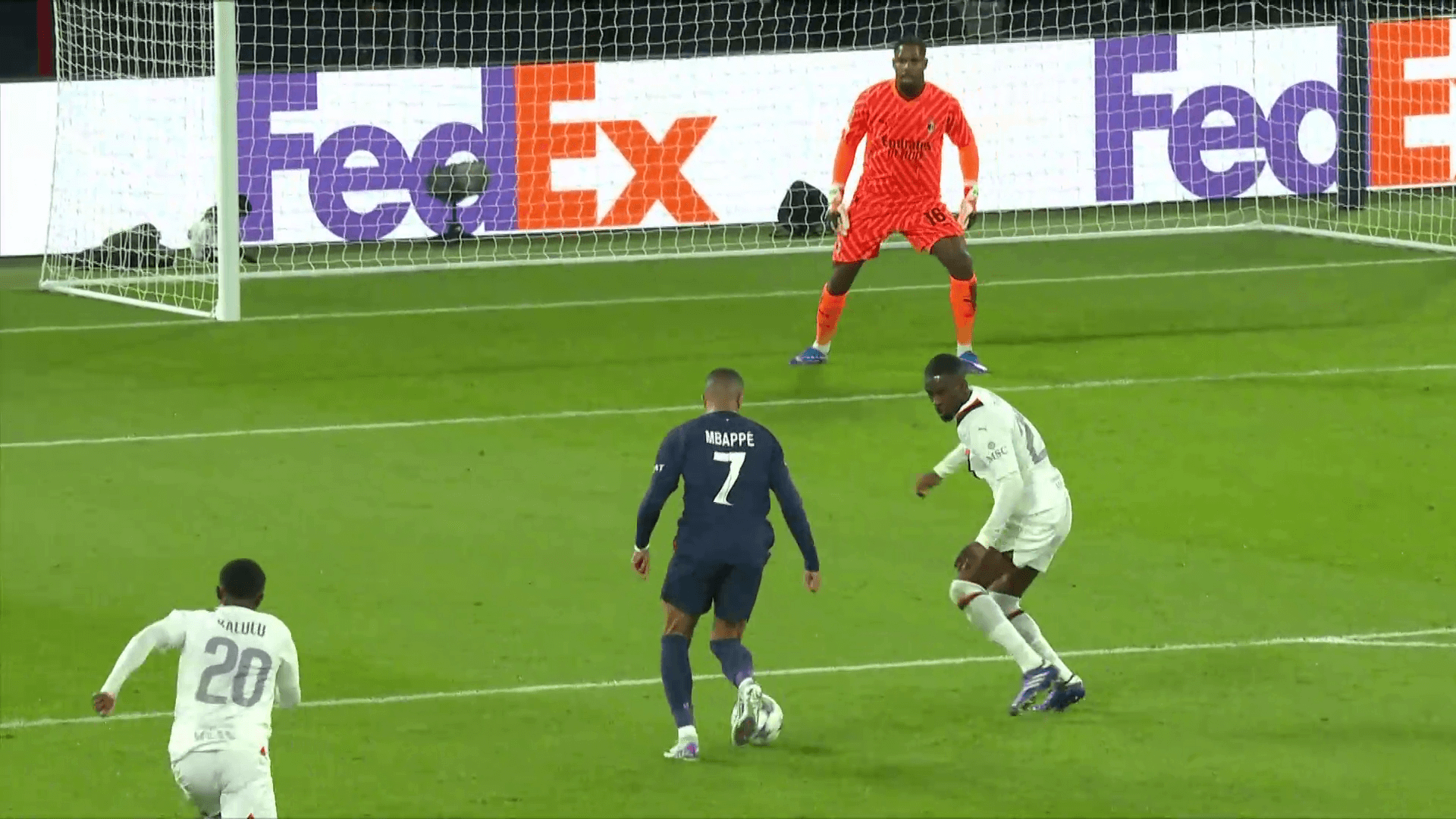
The part where Mbappe gets defenders, as he does here with Tomori, is when he cuts in. The 24-year-old uses his elite-level acceleration and deceleration — speeding up, slowing down and then speeding up again — to disorientate and unbalance an opponent. When he cuts in, Tomori has his weight on his left foot and has to take two steps to turn and face Mbappe.
Advertisement
The outcome is that, while he gets square, he is lunging and his trailing leg (left) is too far away from his blocking leg (right), opening space to shoot through his legs.
Mbappe does just that, and goalkeeper Mike Maignan is rooted to the spot — he has had his momentum used against him, too, moving to his left to mirror Mbappe as he cut in.


Mbappe scored a carbon copy away to Brest four days later. This time it was Lee Kang-in who released the France captain, with an outside-the-boot pass, after PSG regained the ball in their own third.

Lee finds Mbappe isolated against centre-back Brendan Chardonnet. The forward’s first touch is poor — he should probably take it with his left foot, as he ends up breaking stride by using his right — and Chardonnet recovers. But knowing Mbappe, he probably wanted the one-v-one.
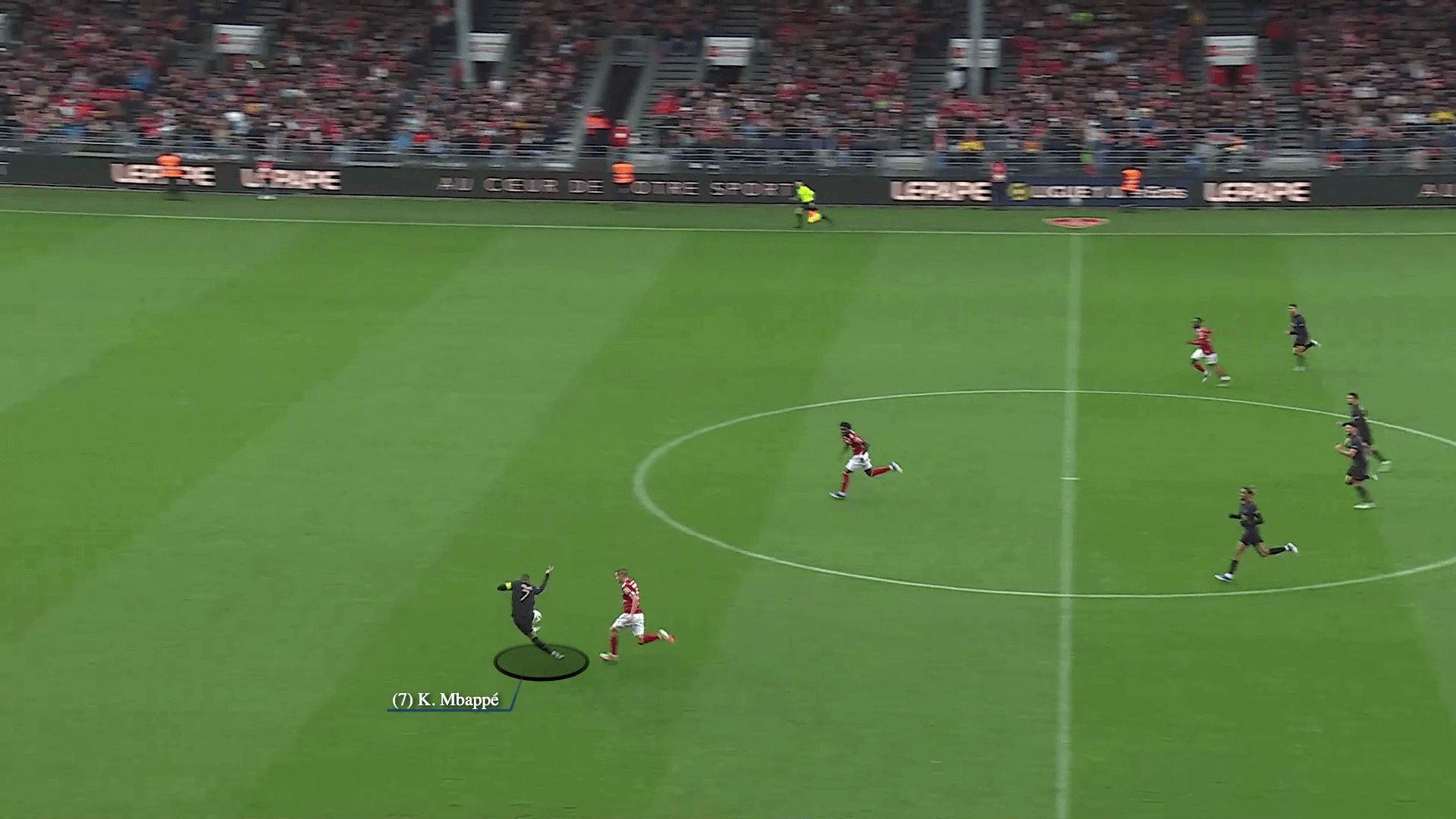
The pattern follows: straight line run to the box, then chop in, and as the defender pivots and tries to square up, shoot through their legs. Goalkeeper Marco Bizot stands still.


“This is something that he (Mbappe) did recently,” Henry said in July 2022, analysing Mbappe’s opening goal against RB Leipzig in a 3-2 Champions League group-stage win.
“He used to like to curve the ball, shift the ball in and curve it into the top corner. Now he’s giving defenders another problem, another weapon. When he pushes the ball here (inside), he’s waiting for you to open your leg, to hit it through your legs. Now he can bend or hit it through your legs. This is why I think this guy is clever, because he doesn’t stay only with what he was born with.”
Let’s break down that goal against Leipzig in 2021.
Like against Brest, it comes from a deep counter-attack.
Marquinhos plays forward to Julian Draxler, who picks out Mbappe’s channel run between Leipzig’s centre-backs.

Mbappe, against Willi Orban, attacks the same way as the previous two examples. He speeds up when he gets the ball and accelerates towards the penalty area. He decelerates on arrival, then speeds up again and chops inside for separation and to force the defender to turn.
Orban ends up in an almost identical stance to goalkeeper Peter Gulacsi, and Mbappe fires through his legs, into the bottom-left corner.

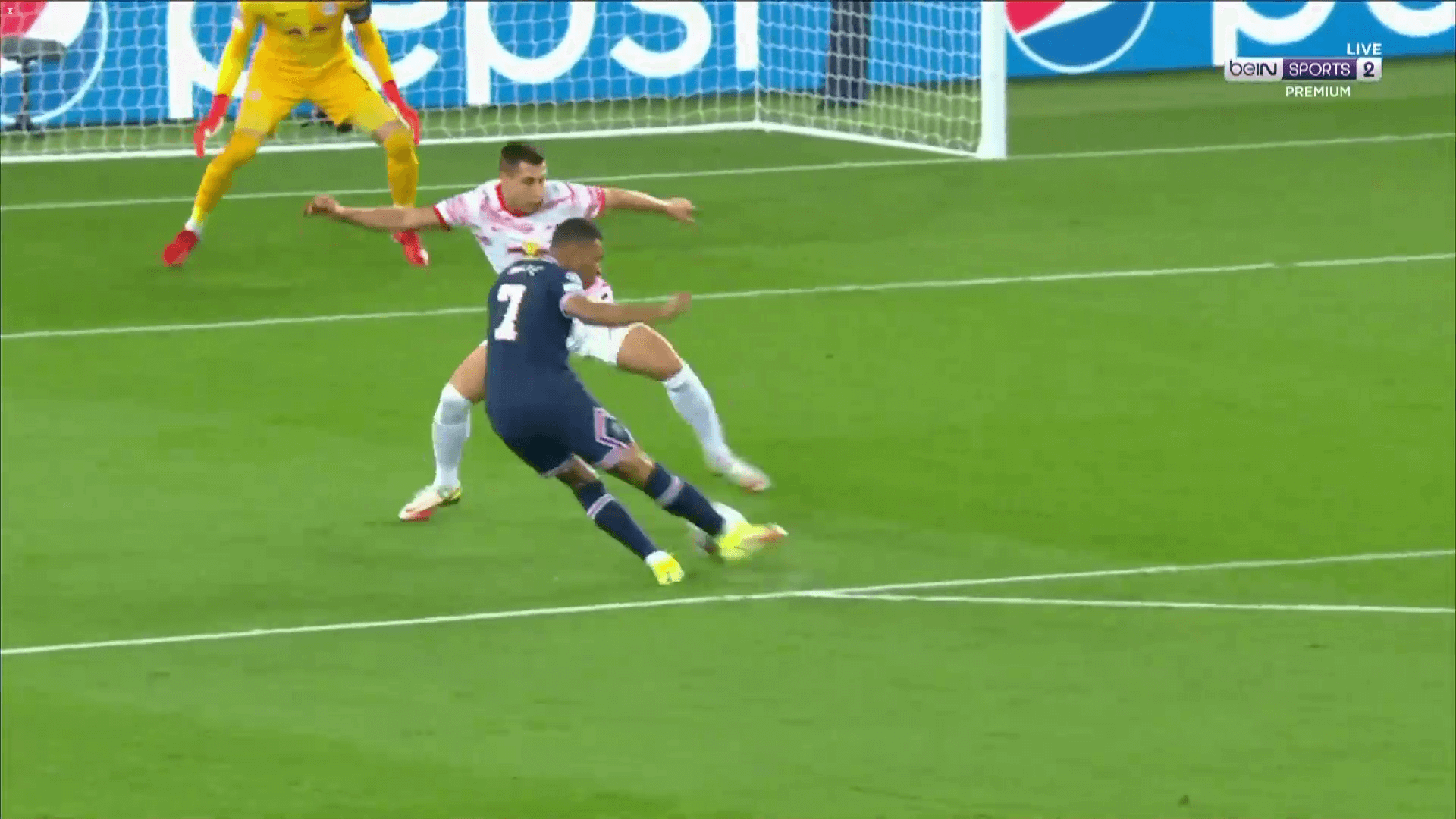
For this type of finish, Mbappe has to isolate a centre-back, making it a goal that can only really be scored against teams with a high line, or in transition.
In Ligue 1, PSG often dominate the ball and rarely get to counter-attack, with opponents sitting off, not pressing and doubling up (or even tripling up) on Mbappe.
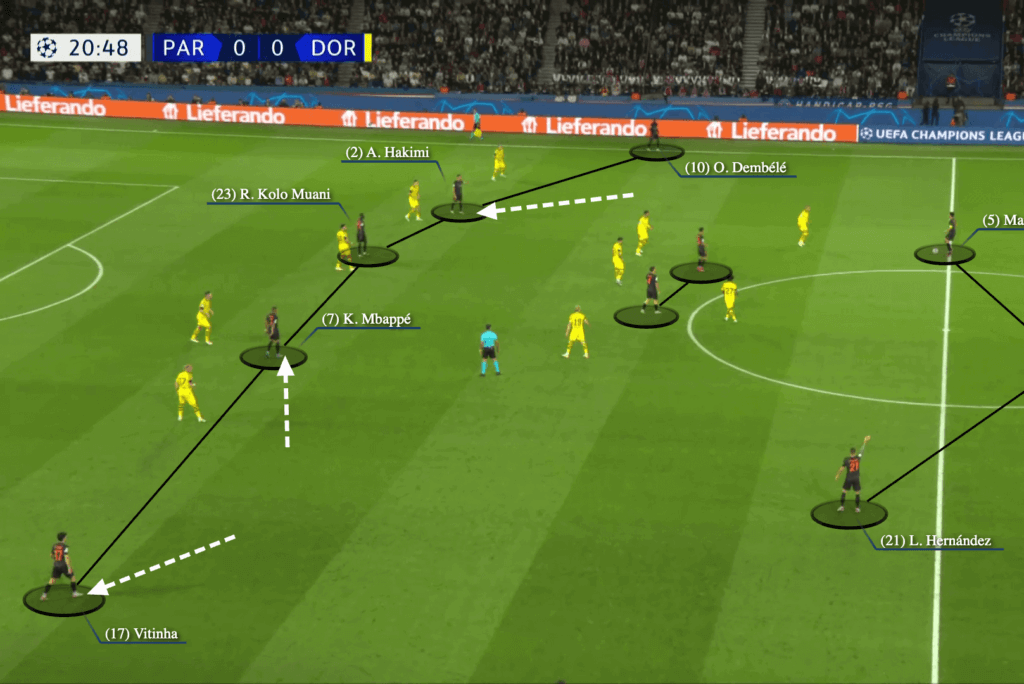
GO DEEPER
No Messi, no Neymar, no problem - why PSG are stronger under Luis Enrique
In the Champions League, though, as Milan and Leipzig have shown, this type of chance is much more probable, as PSG have less possession and teams press them more.
Looking at his shots on target in Europe since the start of 2018-19, Mbappe’s favourite area to aim for is the bottom-left corner. If you split the goal into quarters, 49 per cent of his shots on target have been to the goalkeeper’s right and in the bottom half of the goal.

Mbappe’s goal away to Bayern Munich, the match-winner in the first leg of their quarter-final in 2020-21, ended up taking PSG through on away goals.
Mbappe’s eight Champions League goals were the second-most, behind Borussia Dortmund’s Erling Haaland (10), that season.
For the winner against Bayern, PSG steal back the ball deep, and Draxler starts the counter-attack with an early switch to Angel Di Maria. This is the trigger for Mbappe’s channel run.
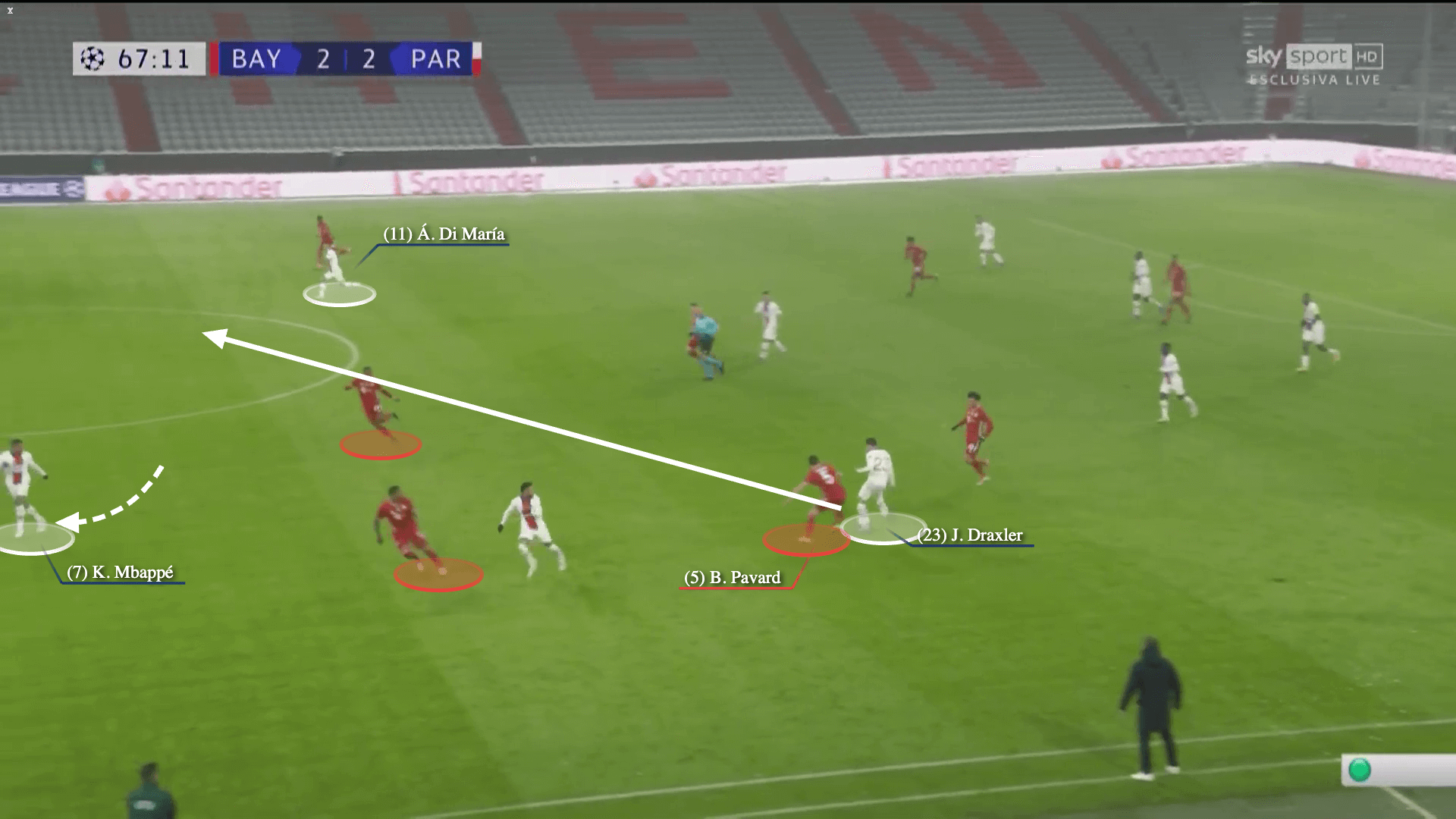
Di Maria slots Mbappe through, between Lucas Hernandez — now Mbappe’s PSG team-mate — and Jerome Boateng.

It is here where Mbappe’s deceleration and acceleration are shown, as he slows and gives Boateng time to recover and get behind the ball. In this position, with a covering defender inside, many wingers would go on the outside (red arrow), but Mbappe chops in (yellow arrow).
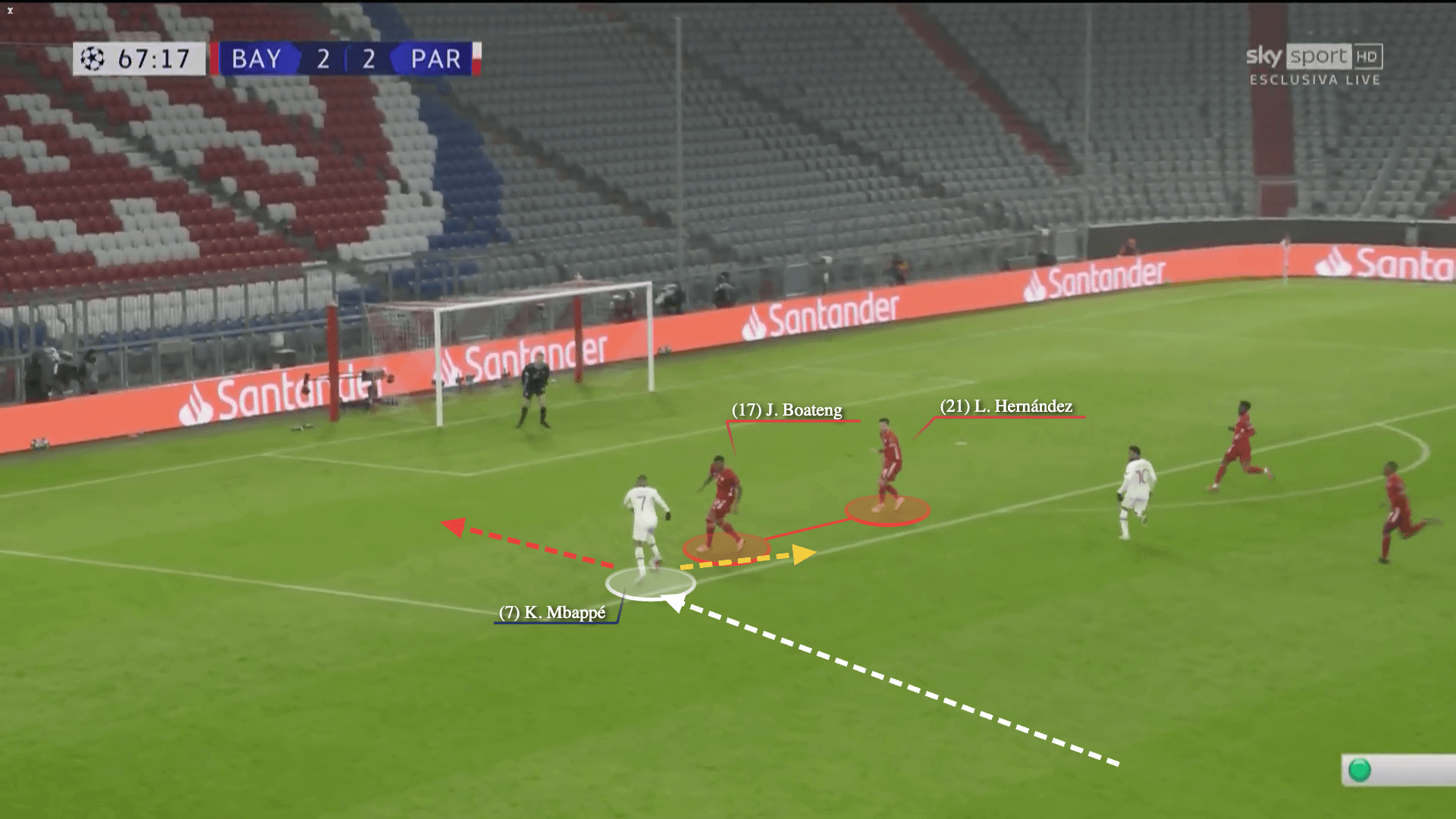
Boateng, famously turned and tangled by Barcelona’s Lionel Messi in 2015, suffers a similar fate to Tomori and Orban — he spins quickly but with steps that are too big, scrambling to get his body in a blocking position and not bringing his trailing leg in quickly enough.
This gives Mbappe room to score through his legs and into the near post, past an unmoved Manuel Neuer.
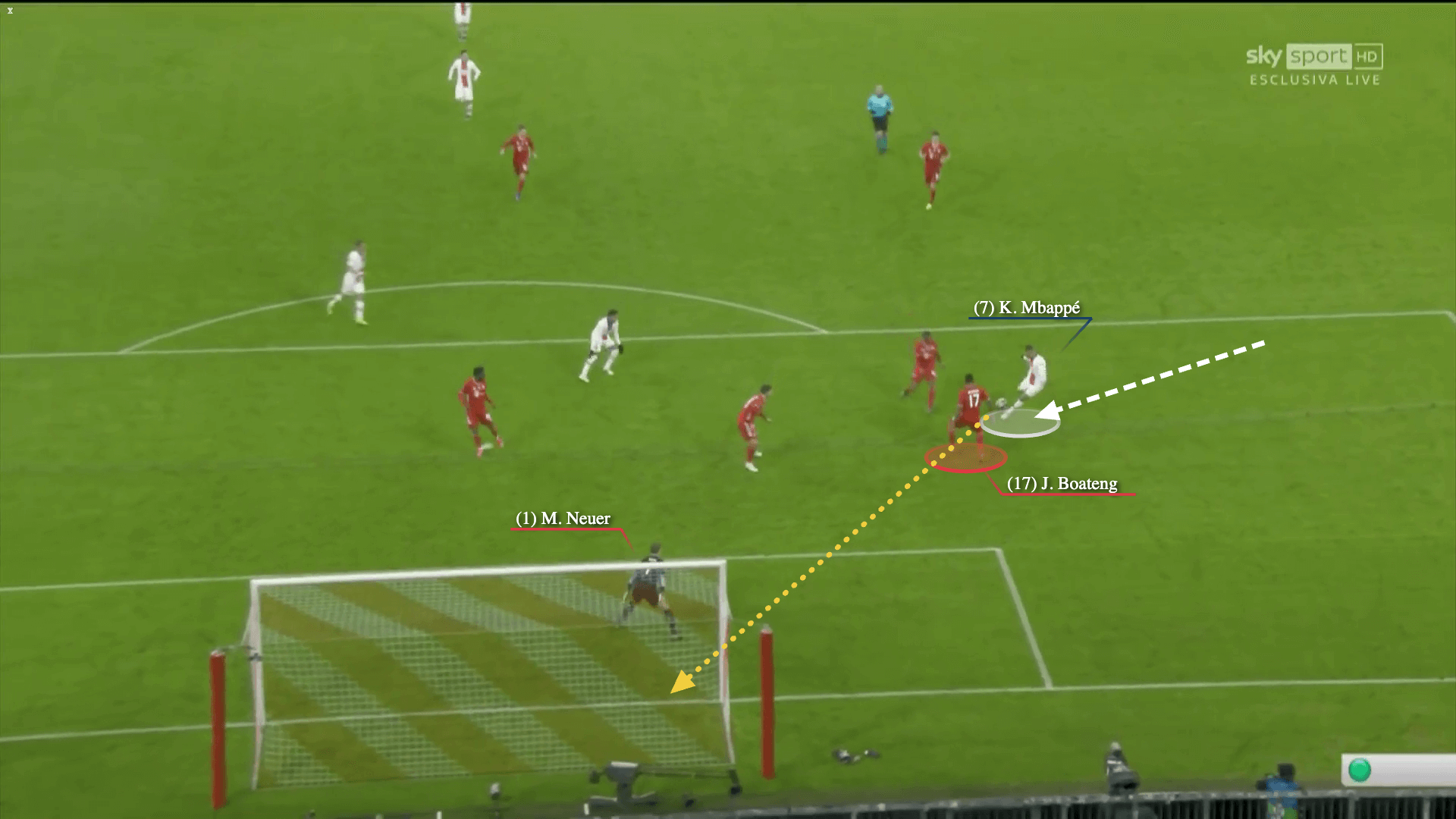

This type of finish is not one that Mbappe used earlier in his career, either at Monaco or PSG. Seven of his first eight Monaco goals were one-touch finishes in the box — attacking crosses between the posts, tapping-in square passes and landing on rebounds. None of his Monaco goals were scored in this ‘reversing’ way.
At PSG, he scored this reverse finish just once in his first 121 goals (double check if you want on the video below).
It is as much about his personal evolution — learning to couple his pace with technique, and maximising one-v-one duels in transition when he rarely gets the opportunity in settled possession — as it is about team dynamics.
His arrival at PSG in the summer of 2017 saw him join a squad featuring Di Maria, Neymar and Edinson Cavani.
Advertisement
Cavani would be joined, and then succeeded by, Mauro Icardi. PSG played with a No 9.
Mbappe started out on the right wing under Unai Emery, then moved predominantly to play as a No 9 under Thomas Tuchel, but also featured a bit on either flank, too. Mauricio Pochettino was the first to give him consistent minutes at left wing, splitting his time between there and No 9.

GO DEEPER
Pochettino: Only man to coach Kane and Mbappe on their rare talents - and how to stop them
Many of his early goals look like finishes from a No 9, and that’s because they were. The rise of the more Henry-type goals — making out-to-in runs behind the full-back and finishing into the far post from the left — have come in recent years.
Mbappe’s position under Christophe Galtier was a lot more fluid, as PSG regularly played a 3-4-3 that effectively became a 7-0-3 as Mbappe, Neymar and Messi did little defensive work, but it gave Mbappe attacking freedom and he scored 41 times in 43 appearances under Galtier.
He is already on 10 Ligue 1 goals this season, the first in the league to reach that milestone, and has the most goals in France’s top tier of all active players (174), just five away from breaking into the all-time top 10.
Mbappe is fourth on France’s all-time list with 43 goals — one behind Antoine Griezmann, eight behind Henry and 11 behind Olivier Giroud.
Keep slotting goals like this and the records will come.
(Top photo: Miguel Medina/AFP via Getty Images)

